Watercraft is the necessary knowledge an angler possesses, starting with understanding bodies of water, their behaviors, and where fish are most likely to reside on any given day. If this skill is mastered, your strike rate will go up dramatically on lakes and rivers. Herein, we consider the basic features of watercraft and some useful tips and information that may help in finding fish more effectively.
Essential Equipment for Locating Fish
First of all, good equipment may greatly affect your ability to find fish. First of all, one of the most essential things in your box of tools should be a good pair of polarized sunglasses. While any sunglasses can cut down on glare and prevent you from squinting, polarized ones are designed to cut down through the surface glare on the water. That can be quite useful on larger bodies of water, where you often have to scan big distances or get a close look at far-off margins for signs of fish.
Of course, binoculars can be quite handy, particularly if you fish so many lakes that feature huge far margins. Not all anglers carry them with them, but they could, in fact, bring in that additional advantage in long-distance spotting of fish. For example, if an angler were a bird watcher as well, he should be able to see some signs of fish at a distance that others around him would be unable to observe. When fishing in places with snaggy far margins or a lot of complicated structures, the binoculars will bring you a closer view to make out the potential hotspots.
Identifying Fish Activity: What to Look For
Once equipped, the next step is to learn what to look for to determine if there are fish in a given area. One of the most obvious indicators is fish crashing or jumping. This often occurs when the fish leap clear of the water in order to clean their gills or rid themselves of parasites. A crashing fish is pretty easy to spot, and in winter, when the fish are tightly shoaled, such action can reveal a substantial amount of fish in that location. In early spring and winter, it would be wise to throw a rod at every place you see fish showing since there could be an enormous shoal that might be beneath the surface, or you could be on the heels of your catch in no time.
The next dead giveaway is bubbles on the water’s surface. Not all bubbles come from fish, though. Many are simply the result of methane gas released from rotting debris at the bottom of the lake, such as leaves and weeds. Now, the trick comes in trying to determine what’s a fish-caused bubble and which is due to decaying organic matter. Large bubbles in a line usually mean methane gas, while smaller, erratic bubbles scattered in patches normally indicate fish disturbing the lake bottom while feeding.
Small bubbles can also be caused by pearling, which involves underwater plants that undergo photosynthesis and release oxygen. This is a common phenomenon both in aquariums and natural bodies of water and is sometimes mistaken for fish activity. Pearling, however, produces very small, consistent bubbles emerging from a wide area, whereas the bubbles caused by fish are erratic and show size variation, indicating active rooting around the substrate by fish.
Other Signs of Fish Presence
Feeding fish can also color the water. When fish disturb silt or clay off the bottom of the lake, they create cloudy, muddy water. This is most apparent in clear lakes in which, under normal conditions, the water is gin-clear. If you find areas that are cloudy or “chocolatey,” you can pretty much bet that fish have been feeding hard on the bottom. Locating such areas will often lead you right to actively feeding fish.
These are responsible for giving you, too, some sort of hints by observing small fish, say fry or tiny roach, darting about. While you may not aim at these little fish, the little fish often draws upon larger predators such as perch or pike. It is great if fry skitters over the surface or small fish shuttle everywhere, which is already a pretty good indication that big fish are nearby, preying on them.
Other more subtle yet valuable signs include flat spots on the water’s surface. Ordinarily, the surface of the water carries a ripple effect; sometimes in certain spots, it will suddenly be flat, and then return to normal. This can be a subtle indication that a fish has swum just under the surface and disturbed the water enough to momentarily change the ripple pattern. Flat spots can also be caused when fish disturb the oil from baits, such as halibut pellets, which reduce surface tension and flatten the ripples. Recognition of these spots may provide the angler insight into fish movements and feeding behavior occurring beneath the surface.
Using Water Depth to Locate Fish
When visible signs of fish activity are not present, knowledge of water depth becomes an important means of determining the location of fish. Depth plays an important role in the habits of fish for several reasons. Shallow water warms up sooner than deeper water; hence, during early spring it is the destination of fish in search of warm water. On the other hand, deeper water cools down sooner; this maintains a stable temperature environment for fish when the temperature falls in autumn. Fish are cold-blooded and, hence, like to stay in temperatures of water that may suit them, thus going to shallow areas during warmth and deeper areas during cooler moments.
They can also measure the depth by using a marker float or a rod with a braid and a lead. This can provide them with an estimate of the depths for a particular structure across the water. Where special equipment is not available, approximate ideas can be obtained from appearances. For instance, shallower parts of a lake that formed when a valley was dammed are often near inlets where streams or springs are entering it, with the deepest portions being at or near the dam itself.
The Importance of Inlets and Fresh Water Sources
Inlets play an important role in lake ecosystems by bringing freshwater rich in oxygen and nutrients. This also makes the area around an inlet one of the most perfect spots for fishing, especially during hot summer days when oxygen elsewhere in the lake may be low. Fish usually flock near such inlets, since water is cooler with increased oxygenation in the water, and therefore more pleasant. The early morning of summer is usually considered the best time for exploring these areas because, during this time, oxygen levels are normally at their lowest across the rest of the lake.
The Role of Wind in Fish Location
Wind may also determine where fish are held in a lake. As it crosses the surface, wind displaces water, food particles, and natural debris toward some areas and away from others. On warm days, having the wind at your face will be to your advantage because it pushes warm surface water and the fish that follow toward you. Food-gathering areas caused by onshore winds may also attract fish in specific areas that could be worth fishing.
On the other hand, wind can be a hindrance under certain conditions. If the surface water has been warm and then starts to cool, the wind blowing towards you can push cooler water into your area, which fish may avoid. As a general rule, when it’s cold, it’s better to have the wind at your back, and when it’s warm face into the wind. These guidelines aren’t foolproof, but they can get you started in finding places that fish might actually be holding in.
Finding Fish in Rivers
It is the speed of flow that is all-important when fishing rivers. Not only do different species prefer different flow conditions, but understanding the flow dynamics can also help you target the right fish. Fast-flowing sections will hold species like barbel, chub, grayling, and trout; these prosper in a highly oxygenated environment and are powerful enough to hold a lie in the current. On the other hand, pike, perch, tench, bream, and carp prefer more sluggish and deeper waters to live in because their metabolism works slower.
In many cases, bends in a river can give at least some indication of where the fish might be found. The outside of a bend is usually faster in flow, which cuts into the bottom of the river to form deeper channels. Inside bends often have slower water that can provide shelter and may be an ideal habitat for those species that prefer flatter, slack-water conditions. Targeting the inside, slower water when fishing around bends could dramatically enhance your chances of finding the species that seek such conditions.
Man-Made Structures and Their Impact on Fish Behavior
Artificial features, like weirs, can support a variety of habitats that appeal to many fish. The high oxygen levels near the sill in weir pools could make them attractive for species such as barbel, while the darker, deeper margins close to these structures are likely to be preferred by pike since these areas offer shelter and also attract baitfish.
In times of flood, fish always seek refuge from the heavy currents and debris. Under such conditions, fishers also find quieter areas, like side streams or tributaries, where fish escape the main flow. Flooding rivers are quite difficult to fish due to the large amount of debris involved. However, finding the calmer areas can offer quite productive opportunities.
Conclusion: Mastering Watercraft for Successful Fishing
Watercraft is an acquired art, polished with time and experience. Understanding the behavior of various species and learning how to read water signs, can substantially enhance your success rate in lake and river fishing. From identifying bubbles, fish movements, and how depth and environmental conditions such as wind and inlets affect their behavior, each constituent part of watercraft adds to the overall knowledge base regarding fishing.
You may want to look at other resources that will give information about specific techniques including depth estimation with marker floats. With time and practice, and paying attention to details, you will be confident about locating fish and catching fish adding to the success and fun of your fishing trip.

